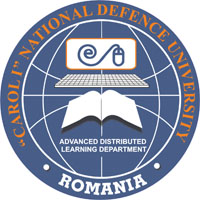WHY BLENDED LEARNING MODELS IN ROMANIAN SCIENCE EDUCATION?
WHY BLENDED LEARNING MODELS IN ROMANIAN SCIENCE EDUCATION?
Author(s): Dana Crăciun, Mădălin BunoiuSubject(s): Education
Published by: Carol I National Defence University Publishing House
Keywords: Blended Learning models; ICT; science education; 21st century skills
Summary/Abstract: Information and Communication Technology (ICT) has proved its value in the Romanian education environment leading to significant changes in the teaching-learning-evaluation process. With the help of ICT teachers can better tackle at least three fundamental tasks: ensuring the necessary materials and distribute course related information through announcements or emails; enhancing the quality of the students’ learning experiences outside the classroom by using ICT resources for communication and collaboration, evaluation and course management - Blended Learning (BL); and supporting self-directed learning through interactive and collaborative learning activities - online courses. BL can be used in primary, secondary and high school science education to design activities that rely on problem based learning, project based learning or activity based learning. In tertiary science education BL can be integrated in the structure of theoretic activities (lectures). Moreover, BL is also a good choice for applied activities where experiments can be combined with simulations or remote lab assignments. In this study we present various models for the design of BL activities that can be applied within the Romanian educational system for primary, secondary and also tertiary level physics education using current ICT resources. We consider general BL models proposed in literature which we then motivate and investigate in the context of science education in Romania. We base our analysis on the assumption that combining traditional learning/teaching methods with ICT aids students to better understand the notions taught in school and helps them build their own knowledge base more efficiently. We also describe the reasons why Blended Learning is currently not used on a wide scale in science education especially at primary and secondary level and propose solutions to overcome some of the identified problems.
Journal: Conference proceedings of »eLearning and Software for Education« (eLSE)
- Issue Year: 11/2015
- Issue No: 03
- Page Range: 460-468
- Page Count: 9

